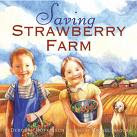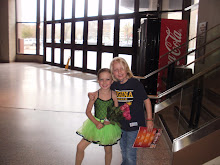BANNED/CONTROVERSIAL BOOKSBanned books. Why do we have to place limits on books? Isn't it up to the reader to make their own opinions of what a book has to offer? I guess I just do not see how we can place one piece of literature away from another based solely on a parents belief that the text and/or illustrations will take their child down the "wrong" path. I see so many of the books that I admire from my childhood placed on these lists solely because of the content within them was fitting at the time they were written and now are "controversial" because the story could offend someone. What about our history. Why should we hide from our past. Isn't it our job to bring the mistakes of our forefathers to light and change our ways. To me there should be no banned or controversial books. Every book on those lists has something to offer readers. LET THEM READ!!! With that said, let's get to blogging. I am choosing to complete this weeks blog under one entry. My reasoning for this is because the books are all related and therefore they should be discussed together.
The Misfits by James Howe (pgs. 1-142)

I am not 100% sure why this book is being lumped into the "controversial" category. I tried to find information that would help to explain why we were choosing to read this book along with our banned/controversial children's books and nothing was made clear to me. For what I have read so far, I would just say that this book is more for helping build self-esteem and less on controversy.
I admire the characters in this book (well the main ones anyway). Addie is not afraid to stand up for what she believes in. Bobby is doing his best to find his place in the world. Skeezie is misunderstood and Joe knows what he is but is not quite sure how to tell everyone else. Their friendship is solid and they support each other. That is a great theme of friendship if I ever heard one. The other plot is one of speaking your voice. When the administration tries to foil their plans of becoming a third party in the upcoming election, they work through their roadblocks.
I like the overall theme of what I have read so far. I am enjoying watching "The Misfits" come into their own, find their inner voice and stand up to those who have been putting them down for years. My wish would be that this book be required reading for all in junior high. Words can be hurtful and students need to know that it is okay to stand up for themselves.
I would absolutely teach this book. I would not approach it however until at least 5th grade. I believe this would be a good companion book to go along with the Character Counts curriculum that is now popular in the schools. Another good time to teach this book would be when students are given a Guidance section on bullying.
And Tango Makes Three by Justin Richardson and Peter Parnell (illustrated by Henry Cole)

What an amazing story. The true story of two male penguins at the
Central Park Zoo (Roy and Silo). Who says you have to be in love with the opposite sex to raise a family. When the penguin keeper noticed Roy and Silo in love, he took an extra penguin egg and allowed them to raise Tango (because after all it takes two to Tango).
This book was another of my choices that had I not been told that it was a story of two homosexual penguins, I would have thought it was just a book about family. The illustrations are whimsical and pull the reader into the story. The love story between Roy and Silo is inspiring.
I would absolutely teach this book. In the
Des Moines area this book was challenged by a family who was APPALLED that their school would openly teach about homosexuality. The school board luckily disagreed with the family. However, the school board, to appease the family moved the book to a part of the library that required parental permission to check out. Nice compromise but ABSOLUTELY unnecessary.
We need to stop sheltering our children. Yes we need to protect them but by taking books like "Tango" and placing them on a permission only shelf, we are not preparing our children for the world that exists today. I do not want my students to have to face a situation and fall flat on their face and make unnecessary comments about anyone (or their lifestyles). It is up to the parents to explain their views at home, but it is my job as a future educator to prepare my students as much as possible for the crazy world we live in.
I read this book several ti

mes trying to find why it would have been considered controversial. Finally the fourth time through it and I think I got it - the main character, Mickey loses his pajamas and goes naked (and I mean naked) for awhile. Whoop d doo. What kid has not seen themselves naked? The text is simple, not controversial in anyway and the illustrations allow you to be heavily involved in the dream. Once again it is a parent who wants to have their child be sheltered that causes this book to be on the list.
I would definitely teach this book. I would have no problem reading it to my kindergarten class. Yes the illustrations may get a snicker when they see Mickey without his pj's but the story more than makes up for it. I would not however leave it in my classroom library. I say this only to hopefully serve as a happy medium between myself and parents.
Our Family Tree: An Evolution Story by Lisa Westberg Peters
The title says it all for this book. One does not need to go any further to know why this book is considered controversial. Any book that discusses Evolution will always come under scrutiny if a teacher chooses to teach it.

Westberg Peters does put the concept of evolution into terms that younger students may understand and the illustrations are age appropriate. I have seen this book placed into two age categories - kindergarten to grade 3 and grade 4-7. That is quite a large span.
I would have to say that I would probably not teach this book unless my administration will back its reading 100%. There are too many issues that are associated with Evolution. I do not want to battle any family who is overly religious and stomp on their beliefs. I also would not feel comfortable teaching this book due to the overwhelming vocabulary that may trip up younger students.
Daddy's Wedding and
Daddy's Roommate by Michael Willhoite

Back in the early 1990's a book like Daddy's Wedding and/or Daddy's Roommate may have caused some controversy. However in today's society there is no way a book portraying a loving same sex couple should be considered controversial.
While yes at times Willhoite has a tendency to be a little stereotypical regarding a gay relationship, the story of love is quite clear. Young Frank is totally at ease with his fathers relationship AND his mother is very much supportive of her ex-husbands lifestyle. The illustrations are a bit over the top but that is necessary to help with the overall feeling of the stories.
I would definitely teach this book in my class. It would help show my students that there are several types of family dynamics. It shows that while Frank has a mother and stepfather, he also has a father and future stepfather who love him just as much. I would use this series when completing a Social Studies unit on families.
Like I said in the beginning I do not believe that we should have books that are considered controversial. Yes, parents do have the write to voice their opinions regarding the literary choices that are given to their children. However, when one parent complains there are more children that suffer from not having the book read to them.
 I am not 100% sure why this book is being lumped into the "controversial" category. I tried to find information that would help to explain why we were choosing to read this book along with our banned/controversial children's books and nothing was made clear to me. For what I have read so far, I would just say that this book is more for helping build self-esteem and less on controversy.
I am not 100% sure why this book is being lumped into the "controversial" category. I tried to find information that would help to explain why we were choosing to read this book along with our banned/controversial children's books and nothing was made clear to me. For what I have read so far, I would just say that this book is more for helping build self-esteem and less on controversy.
 mes trying to find why it would have been considered controversial. Finally the fourth time through it and I think I got it - the main character, Mickey loses his pajamas and goes naked (and I mean naked) for awhile. Whoop d doo. What kid has not seen themselves naked? The text is simple, not controversial in anyway and the illustrations allow you to be heavily involved in the dream. Once again it is a parent who wants to have their child be sheltered that causes this book to be on the list.
mes trying to find why it would have been considered controversial. Finally the fourth time through it and I think I got it - the main character, Mickey loses his pajamas and goes naked (and I mean naked) for awhile. Whoop d doo. What kid has not seen themselves naked? The text is simple, not controversial in anyway and the illustrations allow you to be heavily involved in the dream. Once again it is a parent who wants to have their child be sheltered that causes this book to be on the list.
 Back in the early 1990's a book like Daddy's Wedding and/or Daddy's Roommate may have caused some controversy. However in today's society there is no way a book portraying a loving same sex couple should be considered controversial.
Back in the early 1990's a book like Daddy's Wedding and/or Daddy's Roommate may have caused some controversy. However in today's society there is no way a book portraying a loving same sex couple should be considered controversial. 


















